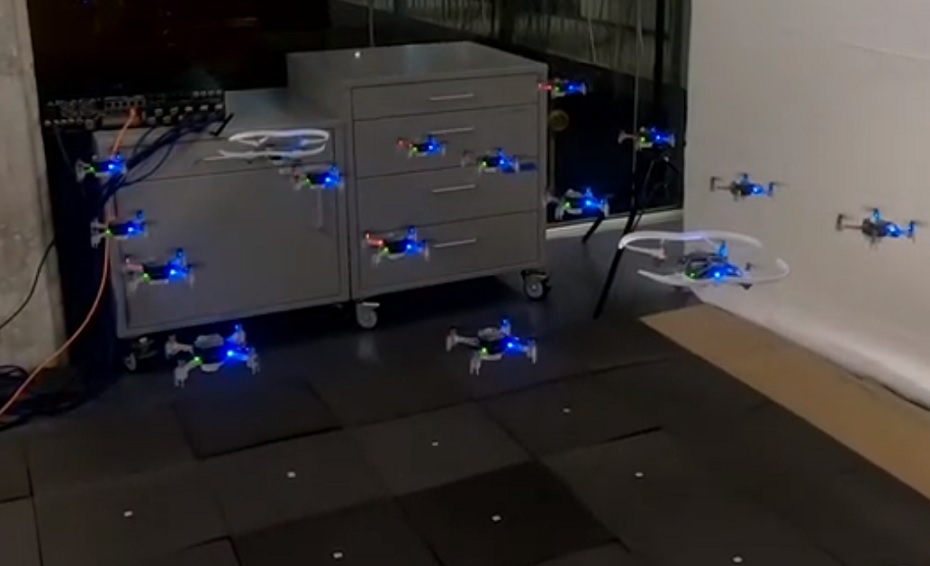This post is also available in:
 עברית (Hebrew)
עברית (Hebrew)
Multi-robot motion coordination is a fundamental robotics problem with wide-ranging applications that range from urban search and rescue to the control of fleets of self-driving cars to formation-flying in cluttered environments.
Two key challenges make multi-robot coordination difficult: first, robots moving in new environments must make split-second decisions about their trajectories despite having incomplete data about their future path; second, the presence of larger numbers of robots in an environment makes their interactions increasingly complex (and more prone to collisions).
A new data-driven method to control the movement of multiple robots through cluttered, unmapped spaces, has been designed by engineers at Caltech.
The researchers developed a multi-robot motion-planning algorithm called “Global-to-Local Safe Autonomy Synthesis,” or GLAS, which imitates a complete-information planner with only local information, and “Neural-Swarm,” a swarm-tracking controller augmented to learn complex aerodynamic interactions in close-proximity flight.
The project demonstrates the potential of integrating modern machine-learning methods into multi-agent planning and control.
When GLAS and Neural-Swarm are used, a robot does not require a complete and comprehensive picture of the environment that it is moving through, or of the path its fellow robots intend to take. Instead, robots learn how to navigate through a space on the fly, and incorporate new information as they go into a “learned model” for movement.
Since each robot in a swarm only requires information about its local surroundings, decentralized computation can be done; in essence, each robot “thinks” for itself.
The technology was tested on quadcopter swarms of up to 16 drones flown in the open-air drone arena at Caltech’s Center for Autonomous Systems and Technologies (CAST).
The teams found that GLAS could outperform the current state-of-the-art multi-robot motion-planning algorithm by 20 percent in a wide range of cases, according to caltech.edu.


























